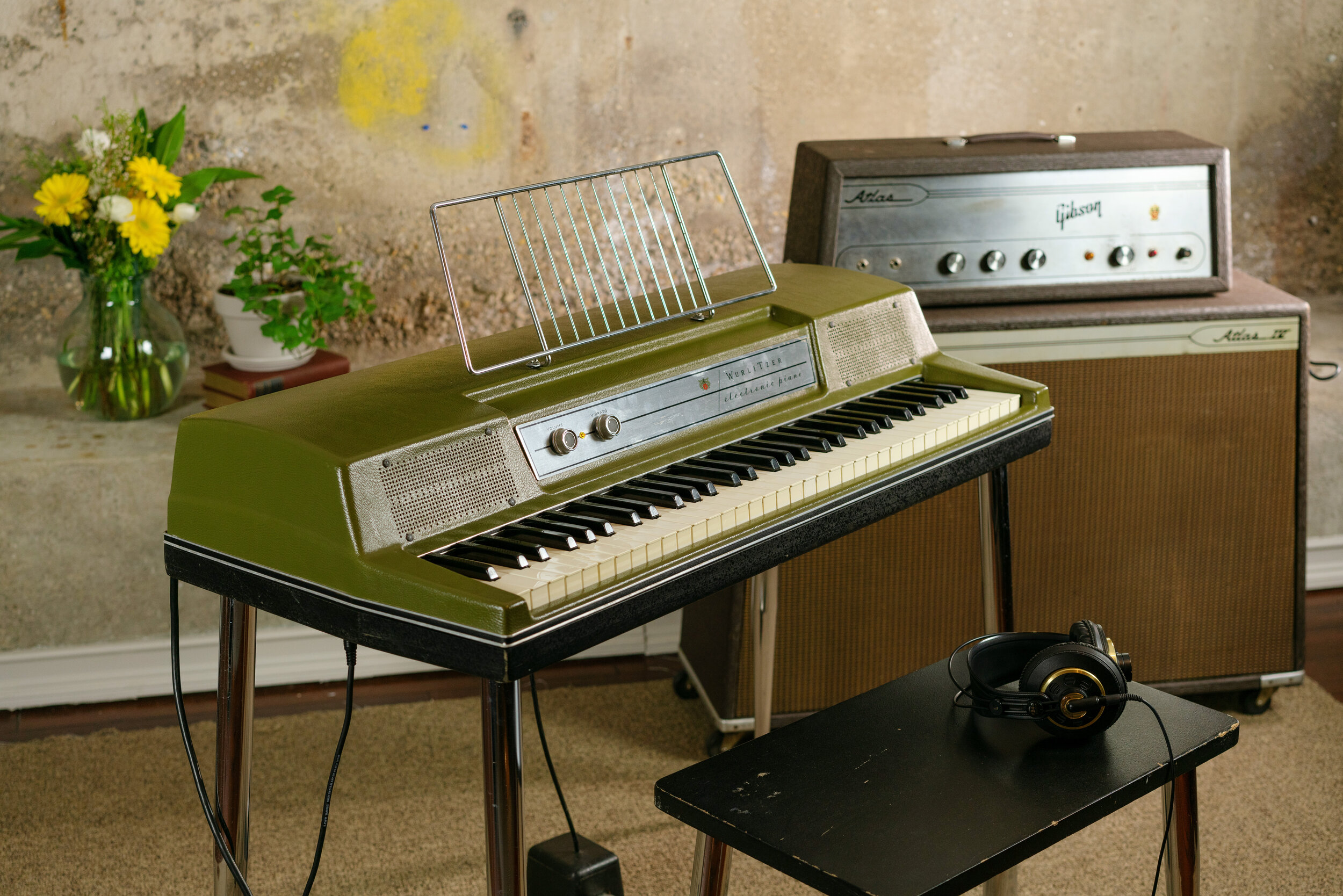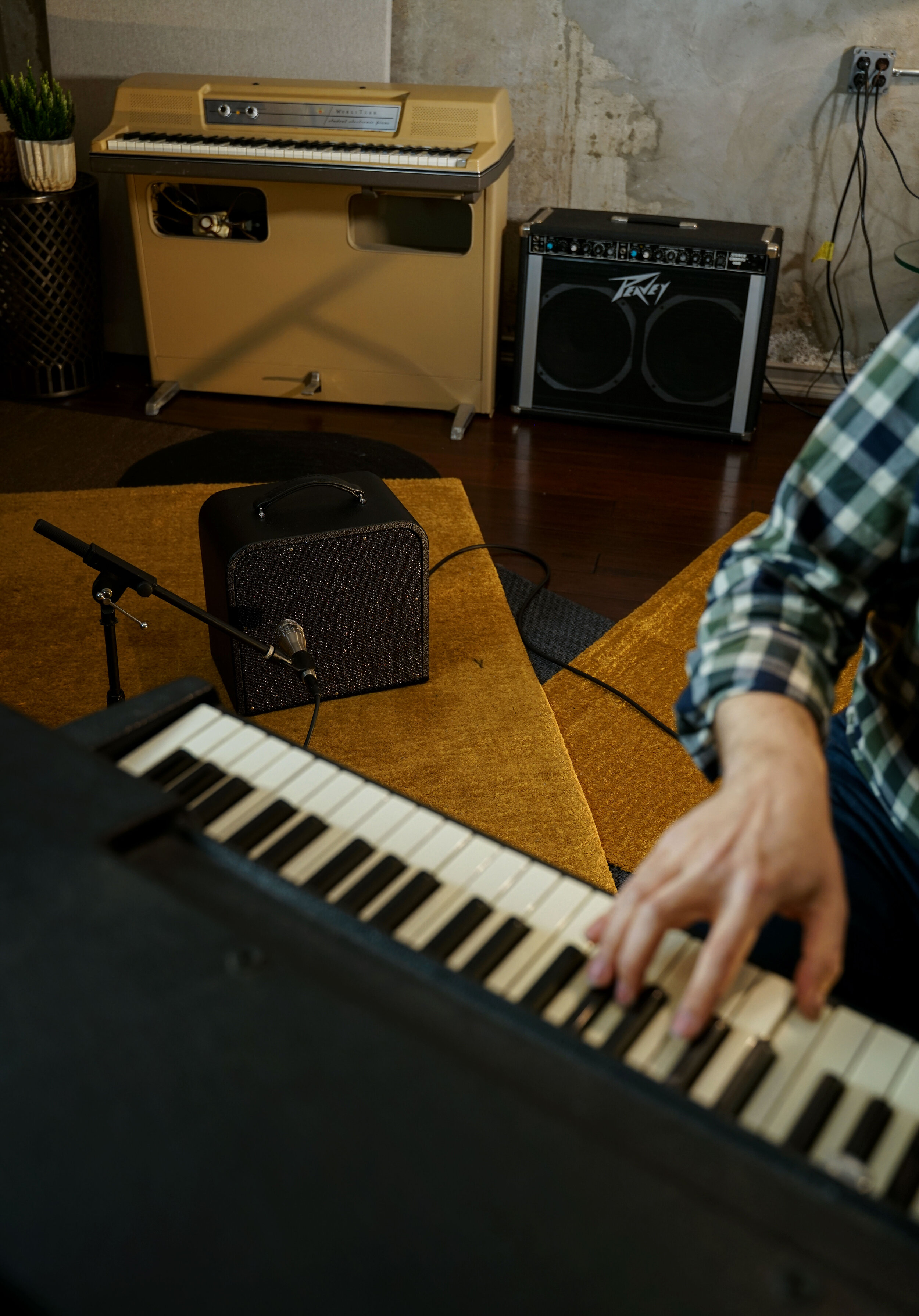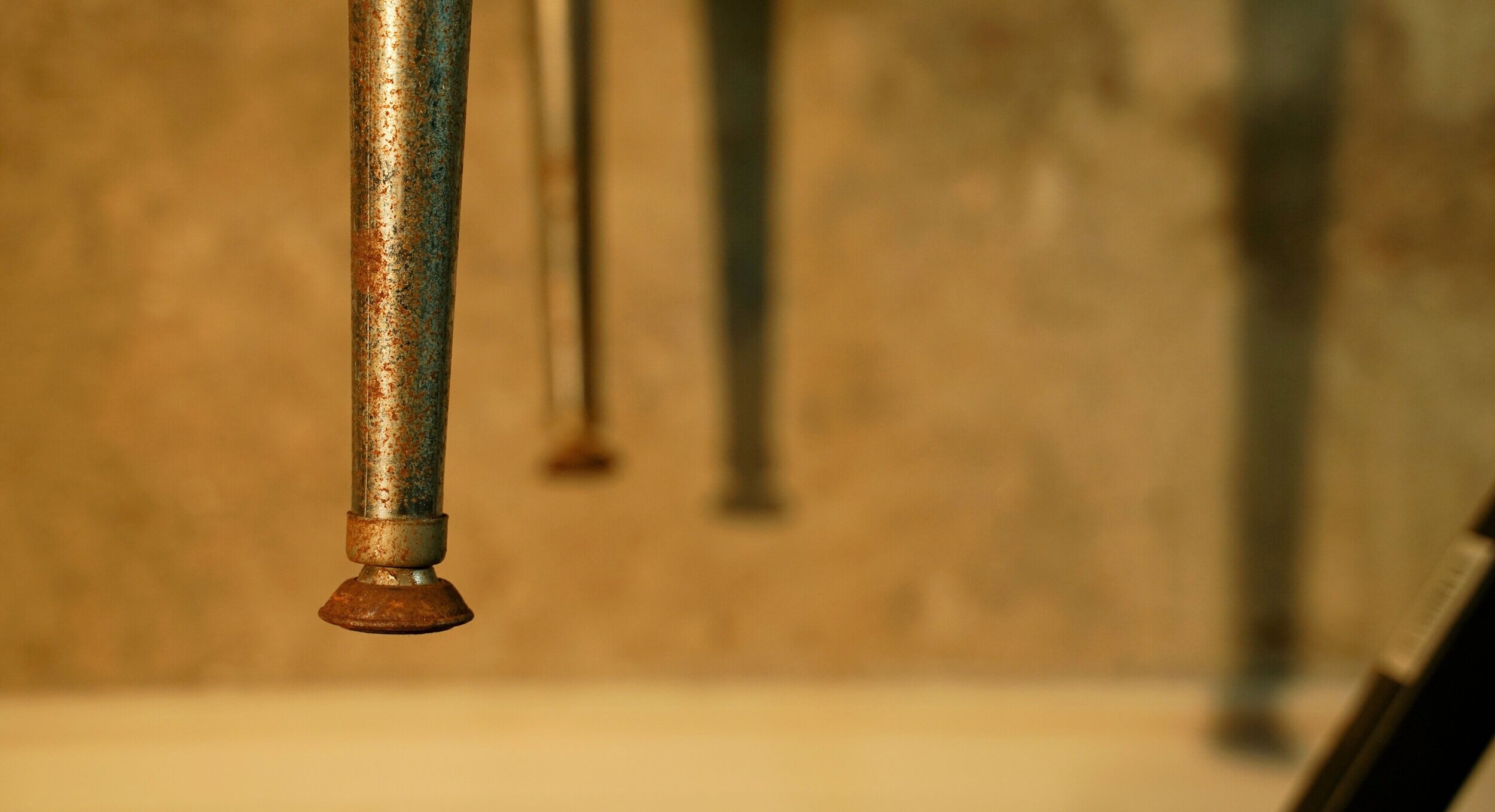What is the Difference Between a Wurlitzer 140 and a Wurlitzer 200a or 200?
Wurlitzer in the 140 series are transitional models: more reliable than Wurlitzer’s earlier electronic pianos, but not as portable as later models. On the other hand, the 200-series is the iconic final iteration of Wurlitzer keyboards: smaller, lighter, more chrome. If there’s a Wurlitzer 140 (or any of its many variants, from the 140b to the 145) that has caught your eye, you may be wondering if buying it is a good idea. How does it stack up against the 200a? Does it require more work? What are the practical differences between them? This guide is here to help.
Why are some of the Keys on my Wurlitzer 112 lower than others?
In this article we are going to discuss 112 hammers that are significantly lower in height than other keys. Also these keys will not hit and will feel ‘stuck’. This sometimes happens when the Wurlitzer 112 has been moved around, placed on its back, or dare I say, placed upside down. This can also happen simply when a key is removed to be worked on. Because the fly (or jack) is different on the 112, it is connected to the whip in a way where it has a more free rotation than in later models. The only thing that is keeping the fly in place on the hammer butt is the back end of the regulating screw.
How to Tell If Your Speaker Is Blown
The sound of a blown speaker is pretty tell-tale - fuzzy, distorted crunchy sound that may be roughly reproducing the signal you are sending through it or making no sound at all.
There are a few scenarios that can cause a speaker to malfunction. A speaker can sustain physical damage to the cone or even the voice coil. Sometimes the damage is obvious. In other cases, the speaker may look fine, and the distortion may be so subtle that you could be wondering if your amplifier is actually at fault. In this article, we’ll share our tips on how to determine whether your speaker or your amp is to blame.
What is the difference between a Wurlitzer's headphone output and aux output?
Although both the Wurlitzer’s headphone out and aux out are (obviously) outputs, they tap the signal from very different points in the circuit. In this article, we’ll describe the differences between the two outputs, so that you can choose which one is better for your application.
Should I use a Dynamic or Condenser Microphone? On the two main types of microphones used in audio recording
If you have read our previous article, Audio Recording at Home for Social Media, you should have a good idea on the basic equipment needed to achieve great-sounding audio recording anywhere. Now you might be ready to dive deeper into some microphone specifics, such as what type of microphone is best for your application. In this article, we will leave out specific microphones (such as ribbon mics) that achieve nuanced colors in your audio and stick to two main categories: dynamic and condenser mics. Understanding the difference between these two types of mics will give you a grasp on how to handle most micing tasks thrown your way.
Essential Accessories for Wurlitzer Electronic Pianos
A Wurlitzer is a self-contained instrument. Thanks to its onboard speakers and onboard amplifier, all you truly need to get started playing a Wurlitzer is the Wurlitzer itself. No external amps or accessories required!
Of course, there are a few pieces of gear that will make your Wurlitzer perform at its fullest potential. Here’s what we recommend:
Refinishing Old Veneer: How we repainted a Wurlitzer 700
Although we love a good original-condition Wurlitzer, we also refinish them occasionally. When refinishing, we try to choose models that are in poor condition and do not have any particular historical significance. (More on our criteria for modding keyboards here.) This keyboard definitely fit the bill.
Common Amplifier Malfunctions: The amp smells like it's burning.
There are two major reasons why an amp might smell like it’s burning:
The amplifier is covered in dust, which is in fact burning from the heat of the tubes
The amplifier is malfunctioning and a component is burning
If you have any doubt whether your amplifier is burning, you should turn it off and unplug it right away. However, you may be asking yourself, am I overreacting? Is it correct to be concerned about this burning smell? Or do old amps always smell this way?
On Troubleshooting
Troubleshooting a vintage amplifier involves a skillset that is distinct from designing new circuits. The prime advantage of troubleshooting — the fact that the circuit has already been created for you, in its entirety — is also its biggest challenge.
Common Tube Amp Malfunctions: My amp doesn't turn on.
The circuitry that turns the amp on and off is very simple: pretty much just some wiring that provides line voltage to the transformer. More commonly, this wiring is in great shape, voltage passes through it with no problem at all, the amp turns on, all the bad components inside receive all the power that the circuit can offer, and then the amp starts malfunctioning.
How to Tune a Wurlitzer Electronic Piano Reed
A Wurlitzer electronic piano is a unique instrument that uses a piano-like action assembly to strike metal reeds of various pitches to make sound. Like traditional acoustic pianos, a Wurlitzer electronic piano (or EP) has an action assembly with wooden hammers, keys, whips and dampers. However, the tone is generated when the hammer strikes a metal reed, whereas on acoustic piano a string is being struck. One simple principle remains the same though: longer or larger tone generators make lower-pitched notes, and shorter or smaller tone generators make higher-pitched notes.
How to De-Rust Wurlitzer Legs (or Any Oversized Item)
Chrome Wurlitzer 200 and 200a legs are often rusty. Unlike earlier models, the 200 and 200a do not have built-in leg storage. And chrome legs are often not stored as conscientiously as the keyboard itself — or, even if they were originally, they’re prone to rolling away (probably, as luck would have it, into the dampest corner of the room). Anyway, we’re happy anytime the original legs are present, regardless of their condition. (Without the built-in storage method, they are very easy to lose over a span of 35+ years!) And if they are covered in rust — good news! — it is easy to remove.
Why does my Wurlitzer 112 amp have a weird octal plug that goes nowhere?
The Wurlitzer 112 has a mysterious octal plug that appears to go nowhere. It is very similar to the wiring harness plug, except that it doesn’t end in a wire. It’s just a little black dome that occupies chassis real estate and doesn’t appear to do anything in particular.
What speaker impedances can I safely connect to my tube Wurlitzer electronic piano?
Every tube amplifier has a preferred speaker impedance: usually, this is something in the neighborhood of 4 Ω or 8 Ω. The preferred speaker impedance of tube Wurlitzers are as follows:
On reading Wurlitzer patents
What is a patent? A patent is a form of compromise. When you patent an invention, you must describe it in detail: specifically, enough detail that someone with a background in your industry would understand how to recreate your invention just by reading the patent application. In return for this valuable information, you are given the exclusive legal right to make and sell your product for a certain number of years. If someone else makes or sells your product during the time period covered by your patent, you have the power to sue them for patent infringement.
How We Digitized the Wurlitzer Service Manuals
We are very excited to announce that our collection of Wurlitzer service manuals are available for download!
The Wurlitzer service manuals are a valuable resource in restoring Wurlitzer keyboards. Although they are not perfect, they contain a lot of interesting, useful, and historically important information. The 112 claims that it is not a guide on servicing pianos in “ten easy steps” (condescending air-quotes theirs!), but it kind of is. You should read the service manual corresponding to your Wurlitzer — and maybe even a few others, since a lot of the information can be applied across models.
Drawing the Line Between Troubleshooting an Amp and Modifying It
When you repair an amplifier, you have two choices. You can bring it back to its original state by fixing only what is broken. Or, you can improve the circuit by modding it.
There is a lot to love about an amplifier that is in fully-functioning, but original, condition. When using a vintage amp, you are playing music on a slice of time. You are combining two different musical periods in a way that is impossible to replicate with any other gear. It’s basically time travel.
How to Replace Wurlitzer 200 or 200a Metal Feet
If you have just scored a vintage Wurlitzer 200 or 200A, or perhaps you are just pulling one out of storage, you may find that the metal hardware has rusted or tarnished. Depending on where the Wurlitzer was stored, the chrome on the legs might have pitting and/or rust, and more than likely the feet have rust as well. In this article we are going to talk about how to replace the Wurlitzer feet. New Metal Wurlitzer feet are available in our shop and will be a closer match to the vintage chrome legs than the old dull feet. Also your studio floors will thank you!
Audio Recording at Home for Social Media
Whether you are a podcaster or a musician, capturing higher quality audio will make your content pop and grab your listener’s attention. That’s why graduating from apps and smartphones is something you have probably considered — and you would be right to do so. While the cameras on mobile devices are improving to a slight degree, their microphones are small and offer extremely poor sound quality. So, since we’ve decided you are going to aim for good sound quality, let’s go over the basics of how audio is recorded.
De-Rusting Rhodes & Wurlitzer Parts with Evapo-Rust
When restoring a Wurlitzer, there are a lot of really tedious and time-consuming steps: polishing keys, lubricating action parts, regulating, tuning, etc. We could go on and on — but we won’t, because today we are talking about rust removal, a task that is not on that list. Removing rust is easy and actually borderline fun because it only requires two things: a little Evapo-Rust and a few hours to kill while the product works its magic.




















